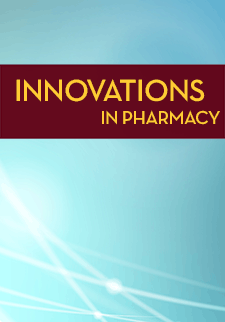Integrating Components of Medication Therapy Management Services into Community Pharmacy Workflow
Corey A. Lester
Jennifer L. Helmke
Tana N. Kaefer
Leticia R. Moczygemba
Jean-Venable R. Goode
DOI: https://doi.org/10.24926/iip.v5i2.340
Keywords: community pharmacy, workflow, work system, MTM services
Abstract
Objective: The objective of this study was to develop and evaluate a process for integrating components of medication therapy management services into a community pharmacy workflow. Secondary objectives were to evaluate outcomes as well as patient and pharmacist satisfaction with this change.
Methods: This prospective, 3-month observational study took place in a small, independent community pharmacy. This intervention included a redesigned work system that included a seated private desk area and focus on the pharmacist, rather than the technician, being the first contact when patients entered the pharmacy. Pharmacists participated in a focus group before and after the implementation of the new workflow to better understand the delivery of the intervention and assess satisfaction. Process outcomes included time spent with the patient, the number of medication-related problems identified and recommendations made, the type of disease education provided, type and number of immunizations administered, and health monitoring tests performed. Patient satisfaction surveys were distributed after completing the intervention during the third month of the study.
Results: A total of 56 patients were enrolled in this study resulting in 82 encounters. Forty medication-related problems, including experiencing an adverse drug reaction and ineffective therapy, were identified with recommendations made to patients or prescribers. Disease education, such as goals of therapy, was provided 46 times. Health monitoring tests, such as blood pressure, were performed 16 times and eight immunizations were administered. The revised workflow incorporating components of MTM services was successful in that 39% of encounters were less than two minutes and 49% of encounters were between two and five minutes in length. Only 12% of encounters were greater than five minutes. Overall, patients were very satisfied with the intervention. Pharmacists responded positively, but expressed concern that the changes to the work system prevented them from overseeing technician functions.
Conclusion: Pharmacists in community practice are able to provide components of medication therapy management services during a brief, face-to-face interaction with patients. Overall, patients and pharmacists were satisfied with the changes to the pharmacy work system and that additional work system changes are needed to further expand the role of the community pharmacist and facilitate patient-pharmacist interactions.
Type: Original Research


